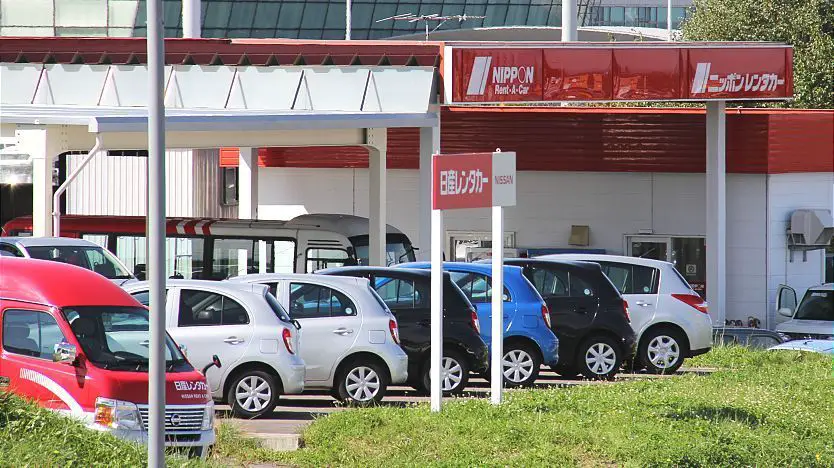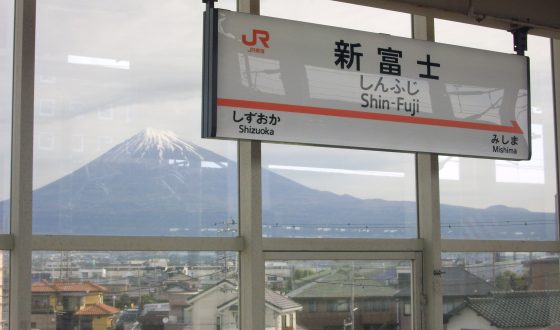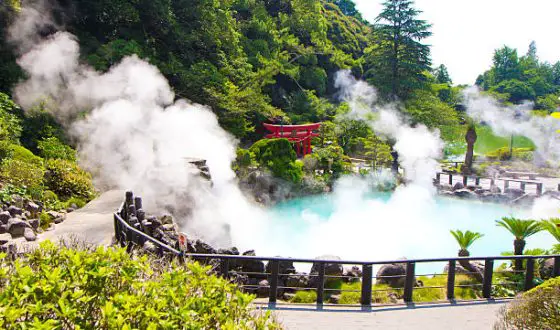Can You Rent A Car in Japan? – Everything You Need to Know When Renting A Car
You’ll miss out on some of Japan’s most interesting sights if you just visit locations that are reachable by public transit. Trains are the best transportation for trips to and within major cities, but you need a car to get to some of the most picturesque — and less-visited — locations. The best way is to rent a car.
Making travel plans to Okinawa? You may travel to the numerous beaches, waterfalls, and historical attractions by renting a car. As Okinawa’s transit system is not very handy, renting a car lets you make the most of your time on the stunning island.
Want to see Mt. Aso, Japan’s biggest active volcano? It is situated in an area of the island of Kyushu that is difficult to access by public transportation.
If you wish to explore the Fuji Five Lakes or other rural places on the island of Honshu, you can even rent a car in Tokyo!
These are but a few instances, but there are many more incredible and distinctive locations in Japan that are best explored by automobile. And you can choose different traffic like cars, but some people don’t know that: “Can you rent a car in Japan?”, the answer will be below, you can know all the information about renting a car in Japan!
Let’s started!
Can you rent a car in Japan?
Yes, of course, Japanese car rental is simple and operates similarly to American car rental.
Let’s watch the video to understand more about it!
Is it really necessary to rent a car in Japan?
You don’t need to rent a car if you plan to stay in Japan’s major cities, which have a variety of public transit choices, as traffic there can be heavy. However, renting a car can be handier if you want to visit rural areas or are traveling to a big group. This is especially true if you want to go to locations where there may be no public transportation.
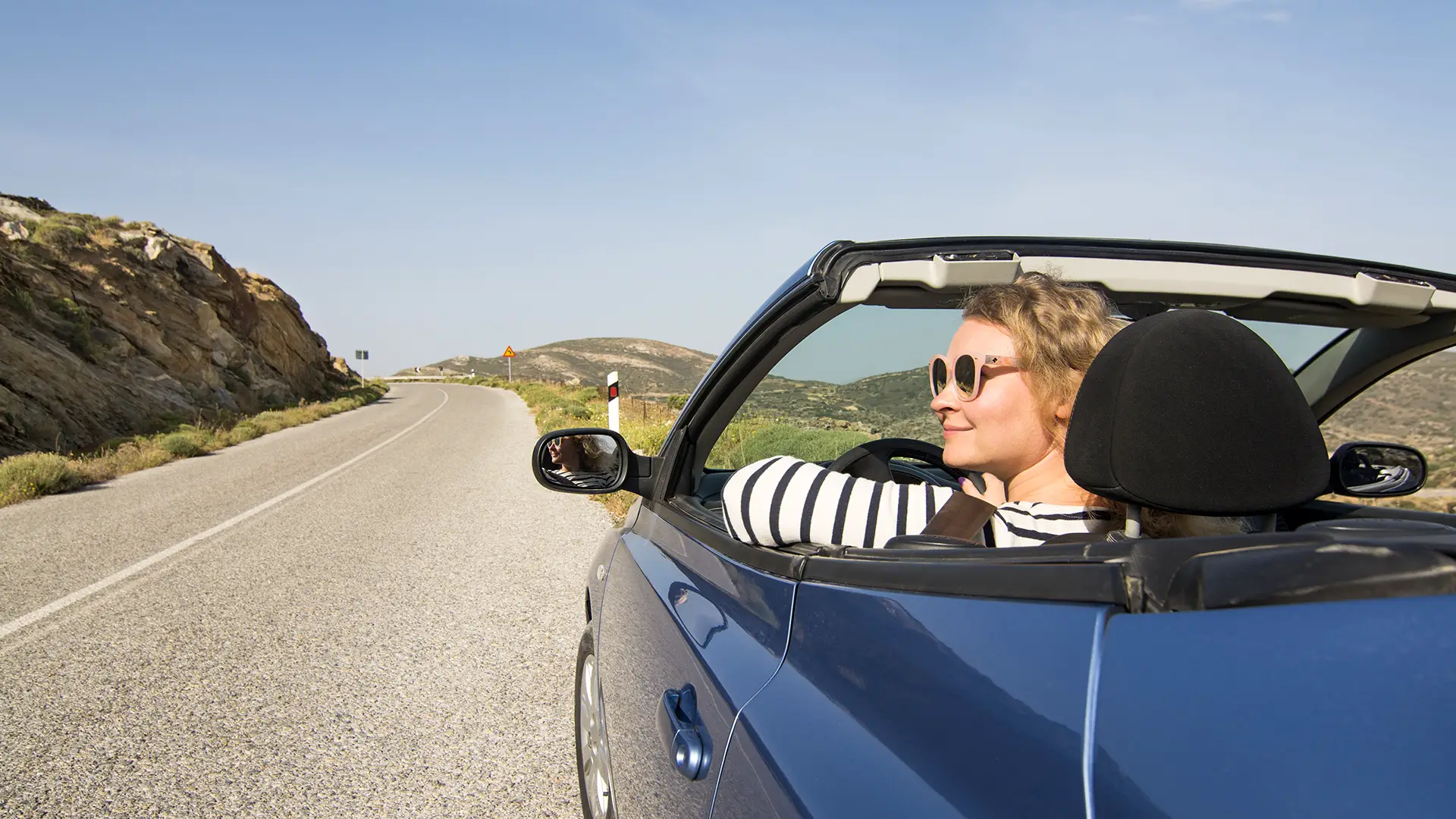
- Renting a car can be more handy if you want to visit rural areas or are traveling to a big group. (Source: Internet)
A Few Things You Should Know Before Renting A Car in Japan
1. In Japan, you must be at least 18 years old to rent a car.
In Japan, 18 is the minimum age required to drive.
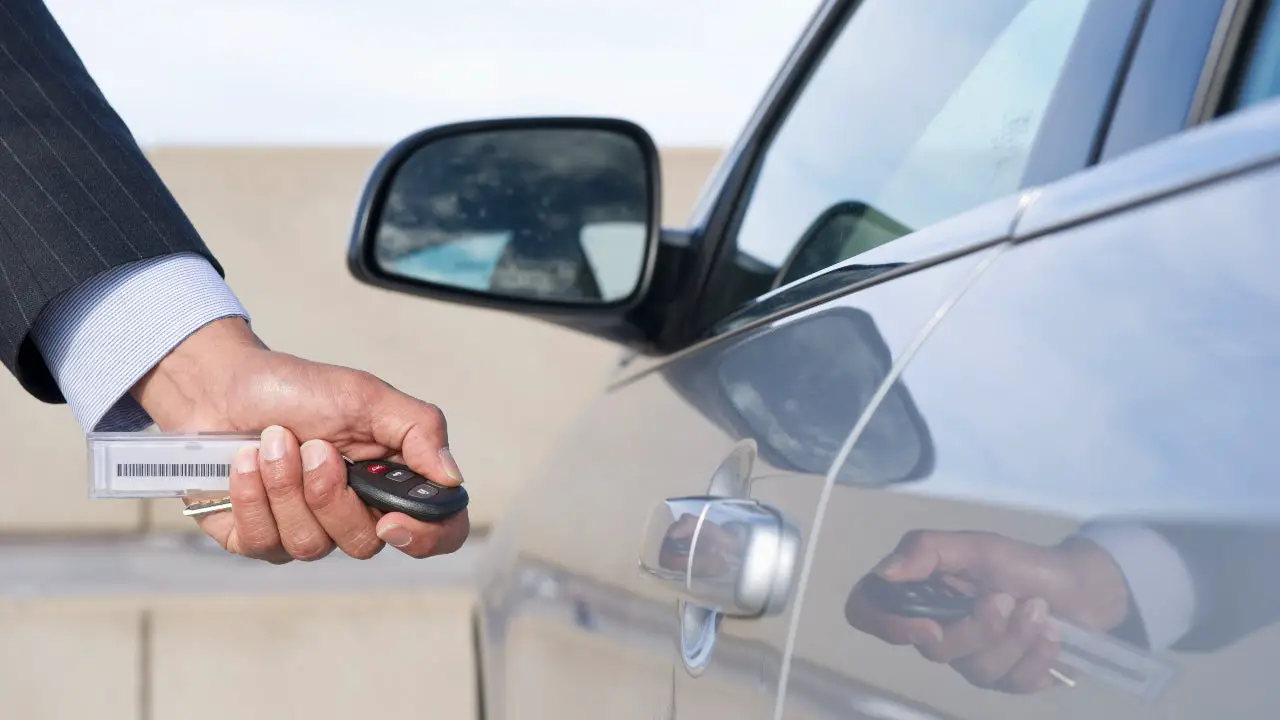
- In Japan, 18 is the minimum age required to drive. (Source: Internet)
2. An international driving license is required (IDP).
With a U.S. driver’s license, you are permitted to rent a car in Japan, but you also need an IDP. Before going to Japan, you should get the IDP.
IDPs cost $20 and only two passport-size pictures and a current U.S. driver’s license are required. The permits are valid for a year, but you can only use them in Japan if you are a temporary tourist there.
Ask your command if a SOFA driver’s license is available if you are a member of the US military stationed in Japan.
Only two locations are permitted by the Secretary of State to issue an IDP:
- United States Automobile Association (AAA) An IDP is available by mail or at any AAA location.
- American Automobile Travel Association (AATA) Mail is the only method of entry for IDP.
3. A “Kei” car rental could be less expensive.
Light automobiles known as Keijidosha or “Kei” cars are easily recognized by their yellow registration plates. Compared to standard cars, they are less powerful. Also, they often cost $10 to $20 less per day than a standard rental automobile. On the website of the Japanese car rental company, they could be referred to as “small cars”.
Kei vehicles work well for short journeys around town but not for long drives on the highway.
4. Buying the insurance is a requirement.
The cost of the required insurance, which covers damage, injury, and liability, is included in the prices displayed when looking for automobile rentals in Japan.
You are still required to pay for the Japanese rental car insurance, regardless of the level of protection provided by your own auto insurance or credit card. For roughly $5 per day, you can also purchase additional optional coverage.

- You are still required to pay for the Japanese rental car insurance, regardless of the level of protection provided by your own auto insurance or credit card. (Source: Internet)
5. Nearly all rental automobiles in Japan have automatic transmissions.
You shouldn’t be concerned if you can’t operate a stick shift. Most rental cars in Japan are automatic.
6. Request a GPS training session.
The dashboard of the majority of rental cars in Japan has a GPS. Make sure the display is set to English, and ask the staff to demonstrate the key functions for you, including how to turn it off when you’re done using the navigation.
The option to use a location code rather than an address to find your destination is the best feature of the rental car GPS. When it’s time to return the automobile, you can use the rental car company’s code to navigate back to them.
7. Drivers in Japan use the left side of the road.
On the right side of the car is the steering wheel. It takes some getting used to driving on the left side of the road if you’ve never done it, but once you’re on the road, it’s very straightforward to follow the flow of traffic, and driving in Japan is uncomplicated.
Although most Japanese drivers are patient and don’t drive aggressively, it’s unlikely that you’ll get honked at if you make a mistake when driving in Japan. The turn signal and windshield wipers may not be where you expect them to be, which will be your largest issue.
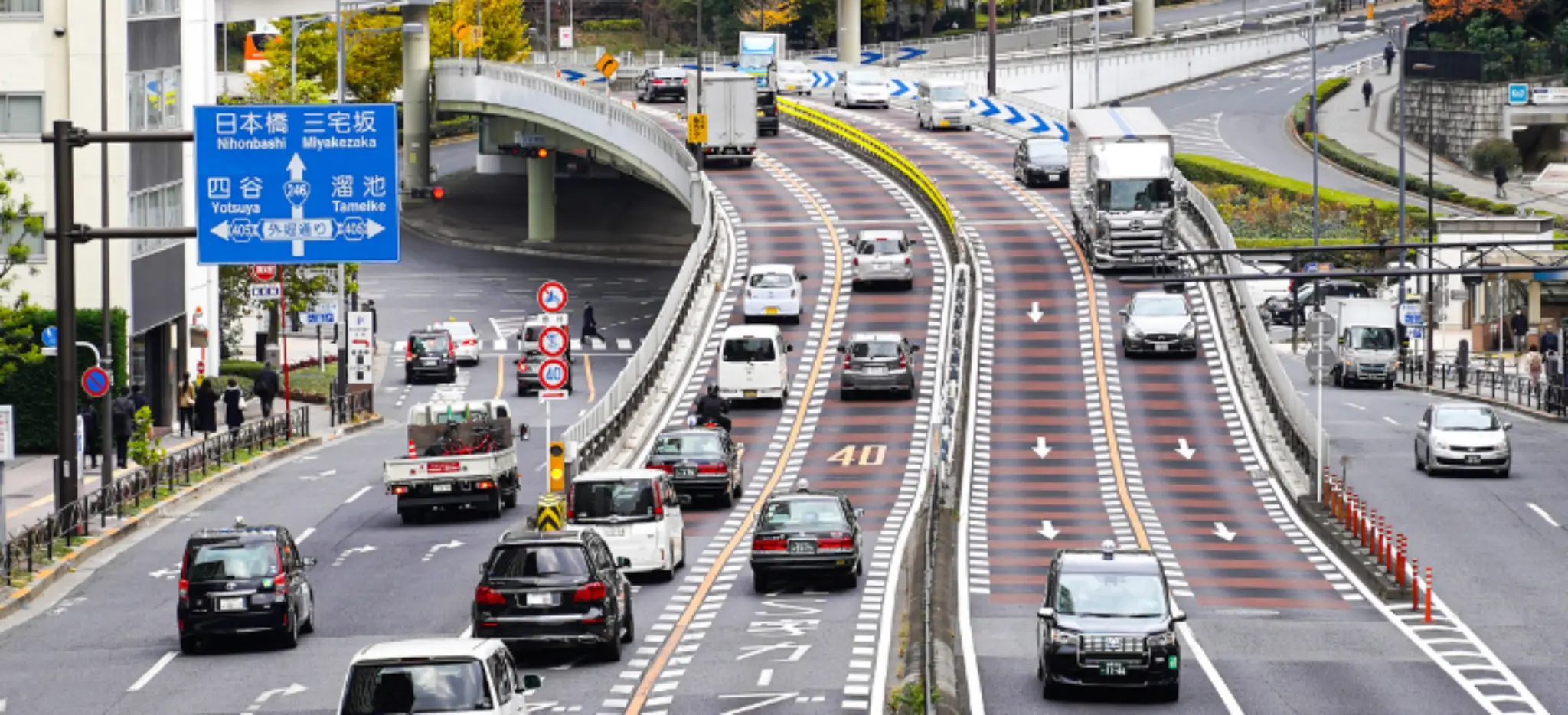
- It takes some getting used to driving on the left side of the road if you’ve never done it, but once you’re on the road, it’s very straightforward to follow the flow of traffic, and driving in Japan is uncomplicated. (Source: Internet)
8. General traffic laws
The driver sits on the right side of the car in Japan, where vehicles are driven on the left side of the road. The standard speed restriction is between 80 and 100 km/h on highways, 40 km/h in urban areas, and 30 km/h on side streets. Anywhere else, the legal limit is typically between 50 and 60 kilometers per hour.
In Japan, there are tolls that must be paid when using the expressways. At the toll gates, you can pay for these manually or using an ETC (electronic toll collection) card. By choosing a different route on local roads, you may almost always avoid tolls; but, this will increase your travel time.
9. Use Google Maps for navigation
If you have portable WiFi, sometimes known as “pocket WiFi,” or if you have a local SIM card for your phone. Despite the GPS on your rental car in Japan, you might wish to utilize Google Maps instead.
The GPS navigation system on the rental car does not update in real time like Google Maps does, therefore traffic conditions are not taken into account. If Google Maps notices traffic congestion along your journey and discovers a faster route, it will reroute you. This re-routing technology has guided us along routes we couldn’t have possibly discovered on our own, saving us from numerous bottlenecks on Japanese expressways.
To avoid the pricey toll roads in Japan, we also utilize Google Maps to identify alternate routes. To have access to Google Maps and other online programs while exploring Japan, buy a 4G local SIM or portable 4G WiFi online and pick it up when you are there.
10. Driving while intoxicated is not tolerated in Japan.
You cannot consume any alcohol while driving, not even a tiny beer with lunch. This statute has severe penalties, including the possibility of deportation.
You’ll see that the majority of Japanese eateries serve a variety of non-alcoholic drinks, including non-alcoholic beer.

- You cannot consume any alcohol while driving, not even a tiny beer with lunch. (Source: Internet)
11. The Electronic Toll Collection (ETC) system is an option on Japanese expressways.
The system is comparable to the U.S. electronic toll systems. Certain rental cars from Japan include the ETC device and card needed to operate the system, enabling you to bypass the numerous tolls on Japanese expressways. When you return your rental automobile, you pay the fees.
You should use the green toll booths to pay with cash or a credit card if you don’t have an ETC card. The majority of American military facilities in Japan offer car rentals. Renters may be given tickets at some bases to pay for tolls to go to their destination (though usually NOT when the agency is Times Rental Car). Given how costly tolls are in Japan, this is a considerable advantage.
Different bases have different requirements for receiving the reward. Several bases allow any renters to use it, including current duty personnel with a Japanese SOFA drivers license (4EJ) and retirees who are visiting Japan and have an IDP. There are restrictions on qualifying for other bases.
To verify their policy, speak with the base rental vehicle companies directly.
You can also like:
- Best Places to Visit in Chiba: A Comprehensive Guide in 2023
- Can A Foreigner Buy A House in Japan? A Comprehensive Guide To Buy House in Japan
- Tokyo Subway Day Pass For Newbie
12. Before returning the car, fill it up with gas and save the receipt.
Japanese vehicles have excellent gas mileage, so even after several hours of driving, the tank may still appear to be full. But be careful not to try returning the car without filling it up; you might need to present your receipt as evidence that you did so.
Some rental vehicle companies in Japan insist that you fill up at gas stations that are a set distance from the rental car facility, or they may even provide you specific directions. When you receive the keys to your car, check your contract or make sure you understand it.
Don’t let your reluctance to rent a car prevent you from seeing some of Japan’s top attractions! Prepare ahead by obtaining your IDP before departing the United States, exercise patience, and adhere to all regulations. You’ll be happy to have the independence and flexibility of driving across Japan.

- Japanese vehicles have excellent gas mileage, so even after several hours of driving, the tank may still appear to be full. (Source: Internet)
How can I rent a car in Japan?
Have a look at your driver’s license first. You may be eligible to rent a car in Japan if you hold an International Driving Permit (IDP) that was issued in accordance with the Geneva Convention, but not from all firms (looking at you, Niko-Niko).
The assistance of booking services like Kayak, Klook, or rentalcars.com is welcome. Before traveling to Japan, you can acquire an IDP through your country’s car association (note: not once you are here). After its issuance, the permit is good for a full year. Any time you use it, you must have your current, valid local license on you. You must be at least 18 years old, too.
You won’t be able to utilize the IDP method if you’re from Germany, France, Switzerland, Belgium, Slovenia, Monaco, or Taiwan, but you can use an official Japanese translation of your license in their place. You can order online from a private company to have the translation done. As an alternative, you could contact your neighborhood embassy or consulate or (in some circumstances) the Japan Automobile Federation. After you get it, you can drive in Japan for a full year.
Of course, a Japanese driver’s license also functions if you have one. Also, you often require a credit card to rent a car in Japan.
How much does a car rental in Japan cost?
It all depends on the type of wheels you want and the number of passengers you need to fit in the rear. For a 24-hour rental, a compact automobile with a 130-cc engine and seating for four people normally costs roughly 7,000 yen ∼ $52,8. Typically, larger and fancier cars cost between 1,500 yen ∼ $11.31and 6,000 yen ∼ $45.26. There are times when hybrids are affordable. Toyotas are widely available for rent. If you’re a classy cheapo, you can also hire premium and sports cars in Japan.
Below is a specific car rental price list, you can refer to it for more information:
The following is a general price range for passenger cars:
- 5000 yen ∼ $37.71–7000 yen ∼ $52.8 for 6 hours
- 5000 yen ∼ $37.71–7000 yen ∼ $52.8 for 12 hours
- 7,000 yen ∼ $52.8 to 10,000 yen ∼ $75.43 per day
On the other hand, you can anticipate to pay a little bit more if you plan to rent a premium vehicle like a Toyota Crown or a Mercedes Benz, as detailed below:
- 10,000 yen ∼ $75.43-12,000 yen ∼ $90,51 for six hours
- 10,000 yen ∼ $75.43-12,000 yen ∼ $90,51 for 12 hours
- 15,000 yen ∼ $113,14–20,000 yen ∼ $150,85 each day
It appears that 6- and 12-hour rentals frequently have the same cost.

- It all depends on the type of wheels you want and the number of passengers you need to fit in the rear. (Source: Internet)
The rental and return procedures for cars in Japan
You only need to bring your reservation information to the authorized rental office, confirm your payment information, and you’re good to go. This is true whether you reserved wheels online using a booking service like Klook or Kayak, over the phone, or through the website of a rental company. It is not required, however having a basic understanding of Japanese will make picking up and returning the rental automobile simpler.
Pick-up
The vast majority of pick-up procedures are universally followed. Normally, it begins with a visual assessment of the car, during which any existing dings, scratches, or damage are documented. To record the problems as they are, take pictures with your phone.
Before you leave the rental car company, find out if you run on standard fuel or a different type of fuel. Normal, Hai-oku, and Keiyu all refer to regular unleaded gasoline, respectively. For a full tank of whatever it is you need, say “Mantan de onegai shimasu.”
Sometimes a staff member would give you a token gift, such as a box of tissues or a can of (typically iced) coffee.
Insurance
When you go off, it’s important to keep in mind that while rental agreements typically include some basic insurance, this may not fully protect you in the event of an accident. You reduce the potential financial obligations you might have if something goes wrong by spending a little extra on a collision damage waiver (CDW) and non-operation charge (NOC). Ask about it if it isn’t on the list. Also, the rental car agency might provide a more inclusive insurance add-on.
In the FAQ section below, we go into more depth regarding what to do in the event of an accident, however we highly advise having a SIM with calling capabilities (most tourist SIMs are data only) so you can easily stay in touch with your rental car business.
Further options
While making your reservation, you can ask for extras like a baby or child car seat, winter tires, snow tires, snow chains, GPS devices, and ETC (electronic toll collection) cards if you have young children.
While using an ETC card, you can pass through toll gates without stopping and just have to pay the rental company after you return the vehicle. Unless you want to pay cash at the toll gates, that is (and yes, they do give change). If it’s available, you ought to use ETC because it’s so useful.
Japan has subpar GPS technology. Despite the fact that some have an English interface and will provide instructions in English, the UI is always complex and frequently out-of-date. We advise utilizing Google Maps’ (far superior) turn-by-turn navigation instead.
Last but not least, you should be careful while choosing tires, especially if you’re coming from a location with a warm environment. Snow tires, winter tires, and snow chains are all distinct. Get a demo of chains if you’re not familiar with them before you depart. A word of caution: If traveling through areas with significant snowfall, consider spending a little extra on an all-wheel drive (AWD) car.
Bringing the car back
Make sure to stop at a gas station (“gasorin sutando” in Japanese) and fill up before returning the vehicle. If this is your first (or forty-first) time driving in Japan, it can be extremely scary to do this.
Instead of using a self-service station, go to a conventional, manned station to make things simpler. The pump attendants will take care of all the tedious labor and will even assist you in getting back on the road. Some rental car agencies can provide you with a slip of paper to fill out at the petrol station as proof that you’ve filled the tank. This slip won’t need to be explained; gas stations near rental car branches will be extremely familiar with it.
A few car rental companies are willing to refuel the vehicle for you when you return the vehicle, but often the driver is responsible.
One-way road journeys are made simple by the fact that the majority of rental companies let you return the vehicle to a different branch (for a cost).
When returning the automobile, if you encounter a traffic jam and it appears that you might be late, you should call the branch right away. This can be a problem if you’re using a tourist SIM that just supports data, so we advise buying a SIM that also supports voice calls.
Increasing the length of your automobile rental
Call your rental company as soon as you can (ideally the location where you picked up the automobile) if you need to prolong your rental for any reason. There’s a considerable chance that your car has already been reserved, so be ready for the rental car company to decline your request. Many branches maintain a small inventory of cars due to space restrictions. They will call you to confirm the extension, though, if the car is still available.
When extending the rental, there is typically a tiny additional fee, but it shouldn’t be prohibitive. Depending on availability, the rental car company may provide you the choice to return to the branch and switch to a smaller or larger class of vehicle if you are unable to prolong the rental period on your automobile.
Whatever you do, avoid calling to extend your rental when you are unable to return the vehicle by the rental deadline because this will result in fees. Each business calculates the fine differently, but it may be as much as 36,000 yen ∼ $271,53 a day and applied even if you are only an hour late.
Japanese car rental services
Automobile rental agencies are most frequently found near airports, significant train stations, and specific city pick-up locations. Some well-known rental car companies include Toyota, Nissan, Avis, Budget, Times, Orix, and Europcar. You can easily book online with most of these businesses because of their user-friendly reservation systems in English.
Several independent travel booking companies like Expedia, Kayak, and Rental Cars also let you reserve a vehicle.
Japanese alternatives to vehicle rentals
Try car sharing if you’re not a fan of the standard rental industry (remember that you’ll need a Japanese license for this). You are able to “borrow” the vehicles owned by Orix Car Share and other companies, which are parked all around the exhibition, particularly in larger cities like Tokyo and Osaka. They can be rented for a short time, even 15 minutes, which makes it simple to go on quick, inexpensive drives (you can reserve a car using an app or website).
Take a taxi or use one of the several JR Passes available for your adventures if you are unable or unable to drive. You can rent a car with a driver if you require a vehicle for a certain purpose but are unable to drive. The price is around 33,000 yen ∼ $248.9 for six hours. Although it appears pricey, it’s less expensive than a taxi, and if you split the cost with friends or other travelers, it might even be a better deal.
FAQs
1. Is it a smart idea to rent a car in Japan?
If you want to go through rural Japan, where public transit might be difficult to use and uncommon, renting a car is an alternative to think about. When traveling in groups or when you have a lot of luggage, a rental car might also be an affordable solution.
2. Can foreigners rent cars in Japan?
You can rent a car in Japan with a U.S. driver’s license, but you also need to have an IDP (International Drivers Permit). Prior to visiting Japan, you should obtain the IDP. IDPs cost $20, and the only requirements are a current U.S. driver’s license and two passport-size pictures.
3. How much does a car rental in Japan cost?
In Japan, the average cost of a rental automobile is $471 per week ($67 per day).
4. Is driving a challenge in Japan?
No, because Japan’s roads are in great shape and are simple to use. Although many warning signs like “Danger” are in Japanese, the majority of traffic signs are in both Japanese and English. You undoubtedly already know that Japanese people are very polite, and this also holds true for drivers.
5. Are foreigners having trouble renting in Japan?
It can be challenging to rent in Japan as a foreigner, especially if it’s your first time. Several rental companies and landlords won’t rent to foreigners. Just 10–20% of Japanese real estate firms are thought to rent to foreigners.
6. Is Japan a left- or right-handed country?
Vehicles typically travel on the left side of the road in Japan. All signs that specify a speed limit must be followed. On regular highways, the legal speed limit is 60 km/h, whereas on expressways, it is 100 km/h.
7. Is Uber available in Japan?
In Tokyo, you can use Uber, but primarily to call a taxi. But more often than not, hailing a random taxi on the street could be quicker (and less expensive) than making a request through the commonplace app.
8. Are there English road signs in Japan?
Japanese road signs typically include both English and Japanese, and they generally adhere to international standards. This rule might only be disregarded in rural areas.
9. In Japan, what is the top speed limit?
Japan has legal speed restrictions of 60 km/h on regular highways and 100 km/h on expressways. Even if there isn’t a traffic sign indicating a speed restriction, it is still illegal to drive an automobile faster than the speed limit. “No Crossing” is indicated by the center yellow solid line.
10. How much does a Japanese international driver’s license cost?
Send or deliver your application materials in person or by mail to the AAA offices. You should bring two passport-sized pictures, your current, valid driver’s license (a photocopy), and $20 (USD) for the permit fee. Please verify the procedure and specifications here.
Conclusion
One of the best ways to travel off the main path in Japan is by car. Even with Japan’s excellent public transportation system, certain locations can only be reached by vehicle.
“ Can you rent a car in Japan?”. Yes, you can, but it’s not easy to rent a car in a foreign nation. You should think about where to purchase the vehicle, whether your license will be accepted, and a few other factors. not to mention keeping in mind to drive left!
Not to worry, we’ll go over everything you need to know to hire a car in Japan so you can go exploring all you want.

